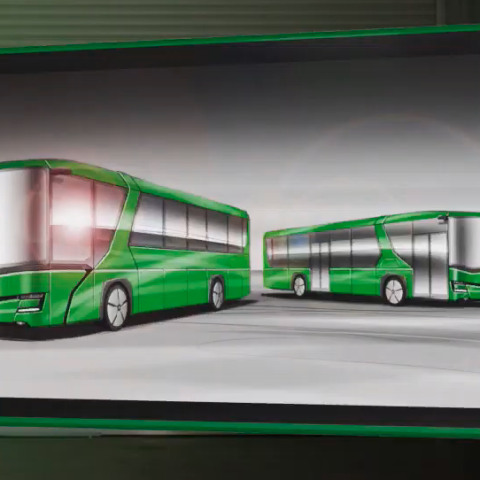Solaris shows sneak peek of the new intercity ZE bus platform at 2024 press conference
Solaris showed during its 2024 press conference, held online this morning, the first renderings of the future intercity bus platform, set to be "ready for commercial activities in 2026", as said Solaris CEO Javier Iriarte.

Solaris showed during its 2024 press conference, held online this morning, the first renderings of the future intercity bus platform, set to be “ready for commercial activities in 2026“, as said Solaris CEO Javier Iriarte.
Over the next few years, Solaris states it will introduce a new zero-emission intercity platform in three different lengths: 10.9, 12.2 and 13 meters. It is worth noting that each of these models will be available as both battery and hydrogen vehicles.
“In 2023, for the first time in our history, Solaris Bus & Coach managed to achieve the third position in the city bus market in Europe, considering all the drivelines, with a 9.7 percent market share. In the battery electric bus market we grew 100%. And we are still leading the zero emission bus market in Europe, considering both BEV and FCEV buses”, said Iriarte during the brand’s 2024 press conference, held online.

80 percent of Solaris backlog is made of zero emission buses
“82% of Solaris 2023 production was made of alternative drive buses. Half of the supply consisted of zero emission buses. And 95 per cent of the 1,838 buses now in our backlog are low or zero emission, 80 per cent zero emissions”, added Solaris’ CEO.
In 2023 Solaris also returned to a position of growth and financial stability. Revenue grew 18% up to 819 million euros. EBIT reached 1% in 2023, recovering from -0,5% in 2022, according to figures showed during the press conference.
It is quite worth noticing that Solaris’ revenue account today for 24% of CAF Group’s revenue, the other 76% coming from rail business.
Market figures presented during the conference underscored the growing demand for sustainable transit solutions, with projections indicating that 87% of urban buses will be zero-emission by 2050.
Solaris focuses on the intercity bus market
Iriarte stressed that “The key areas we want to focus in the coming years are: first, keeping our leadership in zero-emission bus market in Europe; secondly, expanding our position in the European intercity zero emission buses; third, entering the North American ZE bus market” (rendering below).

Concerning the second point, “We are looking to diversify in the intercity zero-emission bus market. We are now developing a new platform, in order to address a market of around 8,000 buses yearly in Europe. It’ll be a brand new platform, born electric, offering a solution for range, capacity, reliability. It’ll be ready for commercial activities in 2026″. It’s an activity headed by Luca Cordiviola that last year joined Solaris in the brand new position of Interurban Platform Director.
Solaris puts eyes on North America
And US fall within Solaris’ plans. “We have been working for over one year in the North American market. We are bringing a new product in the US, it’ll be a combination of our technology adapted to the requirements of our customers and to the regulations of US and Canadian market. CAF is in the North American market since years, we already have a footprint in that market”.
The first step towards this goal was the testing of the Trollino 12 trolleybus in Canada. In August last year, Solaris presented the vehicle in Vancouver and received very positive feedback from local operators. The tests provided the North American authorities with an opportunity to familiarize themselves with Solaris’s flagship product and to gather valuable feedback. During the press conference, Solaris presented for the first time a visualization of the vehicle dedicated to the American market (picture above), with commercial availability planned for 2026.







